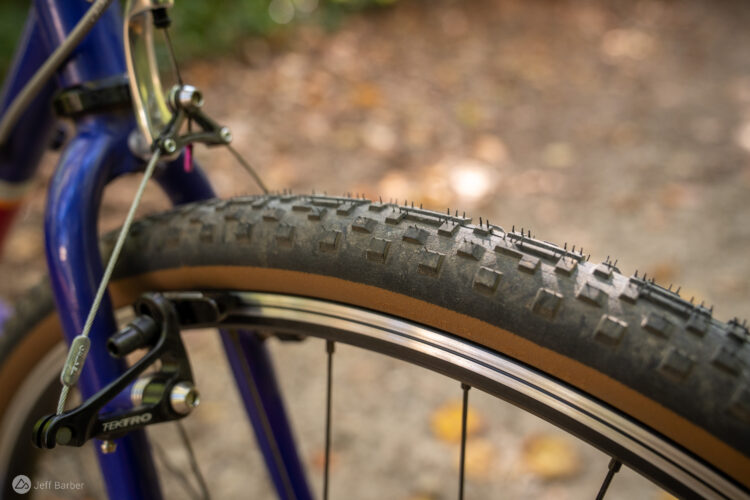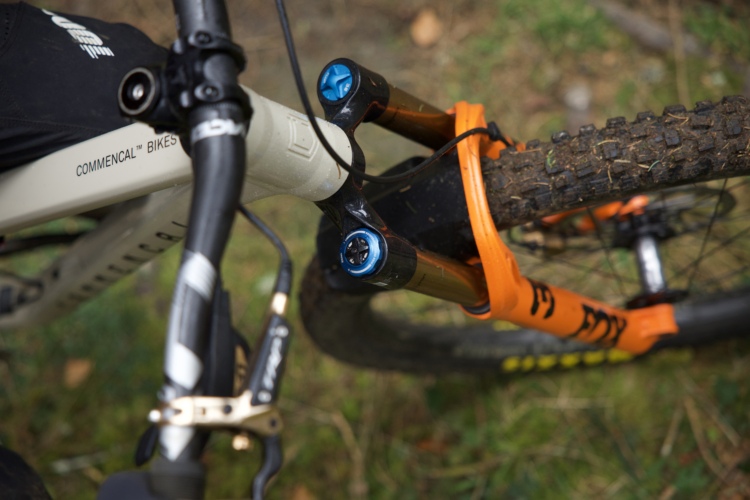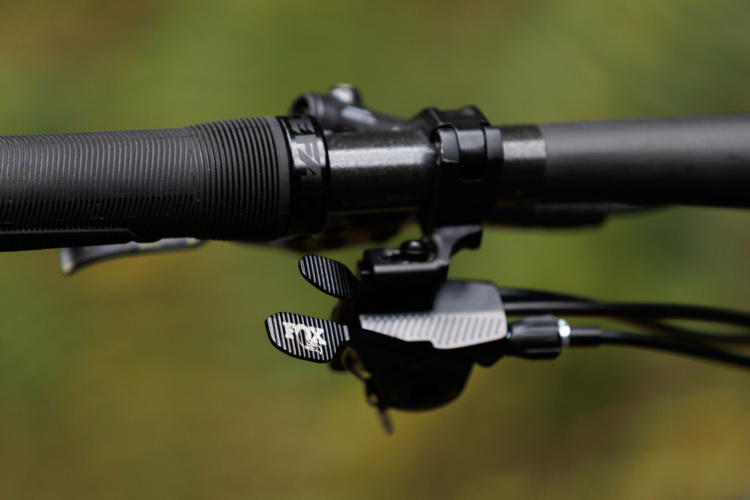
I probably don’t have to tell you that tires have an enormous impact on bike performance and ride feel. Nowhere is this more evident than with gravel bikes, where the term “all-road” is used to describe a style of riding that spans everything from pavement to singletrack. I’ve been testing two very different Teravail tires on my gravel bike, and the first — the Teravail Washburn — is optimized for more sedate surfaces with a smooth center tread and increasingly taller side knobs. I’ve found it’s a great front tire for mixed-surface rides, though it wouldn’t be my choice in the rear, or for 100% off-road rides.
In this review
I installed the Teravail Washburn on my mountain bike-turned-gravel bike, a Scott XC Fun. With WTB i9 29 wheels, the tire airs up easily without tubes, and hasn’t leaked a bit. The rims are 19mm wide internally, which is just below what Teravail recommends for their 38mm-wide tires. According to the brand, the sweet spot for this 700×38 tire is mounted to a 25mm rim, which is a pretty standard size on gravel bikes today.
Teravail Washburn key specs
- Sizes: 650B x 47, 700c x 38, 42, and 47
- Casing: Durable or light and supple
- Weight: 490g as tested (700×38 / durable)
- Price: $68
- Buy from Competitive Cyclist
As you might expect, with the narrow rim, my sample measures 36.5mm wide, short of the 38mm spec. When it comes to gravel tires, getting the right width is crucial given the wide range of frame clearances among gravel bikes. My bike was originally a 26er from the 1990s, so rear tire clearance for 700c wheels is limited. Using narrow, 19mm rims, I’m able to gain a millimeter or two of rear frame clearance. Is that wise? Not if it compromises a tire’s intended performance. In the case of the Teravail Washburn, however, I found it works out just fine.

On (and off) the road
Even if you knew very little about bike tires, you could guess that the Washburn is designed to roll fast. On pavement, the tire audibly slices through the wind like a road bike tire. Yet for such a smooth-looking and fast-rolling tire, the durable casing version I tested isn’t particularly lightweight. True road warriors who rarely venture off piste will no doubt gravitate toward the light and supple version to save weight and roll faster.
But this is a mountain bike publication, and if you’re like me, you ride a gravel bike so you can get to the trail and explore fresh stretches of dirt and gravel along the way. I’ve been pleasantly surprised at how easily and confidently the Teravail Washburn transitions from manicured surfaces to the wild and loose, particularly when mounted in the crucial front position. Sugar sand? Not fun to ride for long, but staying upright and holding a line is doable. Chunky gravel? The tire skitters over the top of the bigger rocks and brushes off the smaller ones. Hardpack? It rolls fast and handles corners fairly confidently.
I’ve been running 35-40psi, which I’ll note is below the imprinted 50-80psi pressure recommendation, and I’ve found the 60tpi casing is supple enough to bend around the terrain without getting pinched or bottoming out. The durable casing, with added sidewall and puncture protection, is worth the weight penalty IMO. It’s extra insurance that makes taking that overgrown cut-thru or exploring that trail off the side of the road an easy choice. I’ve ridden some truly janky lines and haven’t had a single pinch or so much as a pinhole puncture.
Share your Teravail Washburn review
For most riders, the Teravail Washburn likely doesn’t make sense as a rear tire, unless you’re riding 100% pavement, or only in dry, hardpack conditions. There just isn’t enough grip in the center tread for steep or loose climbs. But in the front, the tire delivers grip and control when you need it most — in the turns — without slowing your roll through the straights.
Looking at online reviews of the Washburn, buyers seem to be split, and either love the tire or hate it. Those who love the Washburn say it’s fast rolling and/or puncture-resistant. Those who don’t say it’s slow and/or prone to flats. Few of the reviewers mention if they’re running the durable or light and supple casing, which I suspect makes all the difference. Unfortunately, you can’t have it both ways with the Washburn, or any other bike tire for that matter.

Pros and cons of Teravail Washburn
Pros
- Works well as a front tire for riding a mix of mostly smooth, but occasionally rough, terrain
- Durable casing has proven pinch and puncture resistant off road
- Seems to be true to width
Cons
- Durable casing negates some of the benefits of a fast roller
- Not recommended as a rear tire or for especially loose terrain
Bottom line
For all-road riding, the Teravail Washburn is a good choice as a fast front tire that’s not afraid to occasionally dip into sketchy lines.





















2 Comments
Oct 26, 2024
I only have 1 frame (DB Overdrive pro 29) so when it's trail time I swap whole wheelsets (Vittoria Martello/Agarro on DTSwiss E1700 Spline 2's)
Oct 28, 2024